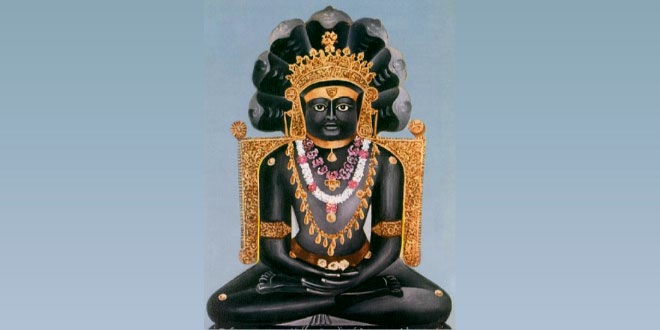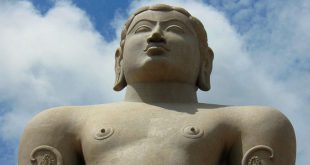Parshvanath or Parshvanatha was the twenty-third Tirthankara (fordmaker) in Jainism. He is the earliest Jain leader generally accepted as a historical figure. He was a nobleman belonging to the Kshatriya caste. Parshvanath is also known as Appandai or Appandainathar.
He lived a life of a nobleman for 30 years and was never married, before he renounced the world to become a monk. He meditated for 84 days before attaining Kewalgyan. According to the Jain tradition he attained nirvana 250 years before the nirvana of Mahavira, the 24th Tirthankar. The chronology accepted by most Jains (Svetambaras) places Mahavira’s death in 527 BCE. Parshva was the son of king Ashvasena and queen Vama of Varanasi. He renounced the world and became an ascetic when he was 30 years old.
Parshvanatha, also known as Parshva (Pārśva) and Paras, was the 23rd of 24 Tirthankaras (ford-makers or propagators of dharma) of Jainism. He is the only Tirthankara who gained the title of Kalīkālkalpataru (Kalpavriksha in this Kali Yuga).
He is one of the earliest Tirthankaras who are acknowledged as historical figures. He was the earliest exponent of Karma philosophy in recorded history. The Jain sources place him between the 9th and 8th centuries BC whereas historians point out that he lived in the 8th or 7th century BC. Parshvanatha was born 273 years before Mahavira. He was the spiritual successor of 22nd tirthankara Neminath. He is popularly seen as a propagator and reviver of Jainism. Parshvanatha attained moksha on Mount Sammeta (Madhuban, Jharkhand) in the Ganges basin, an important Jain pilgrimage site. His iconography is notable for the serpent hood over his head, and his worship often includes Dharanendra and Padmavati (Jainism’s serpent Devtā and Devī).
Parshvanatha was born in Benaras (Varanasi), India. Renouncing worldly life, he founded an ascetic community. Texts of the two major Jain sects differ on the teachings of Parshvanatha and Mahavira, and this is a foundation of the dispute between the two sects. The Digambaras believe that there was no difference between the teachings of Parshvanatha and Mahavira. According to the Śvētāmbaras, Mahavira expanded Parshvanatha’s first four restraints with his ideas on ahimsa (non-violence) and added the fifth monastic vow (celibacy). Parshvanatha did not require celibacy, and allowed monks to wear simple outer garments. Śvētāmbara texts, such as section 2.15 of the Acharanga Sutra, say that Mahavira’s parents were followers of Parshvanatha (linking Mahavira to a preexisting theology as a reformer of Jain mendicant tradition).
 Kids Portal For Parents India Kids Network
Kids Portal For Parents India Kids Network







